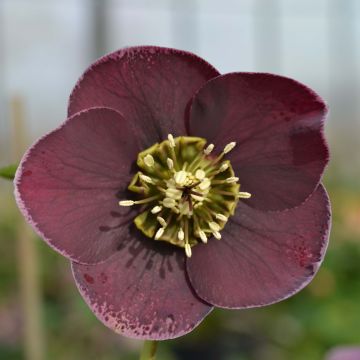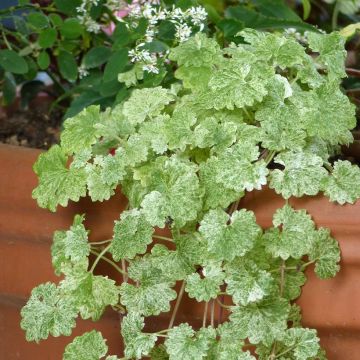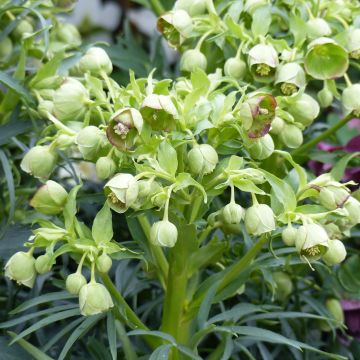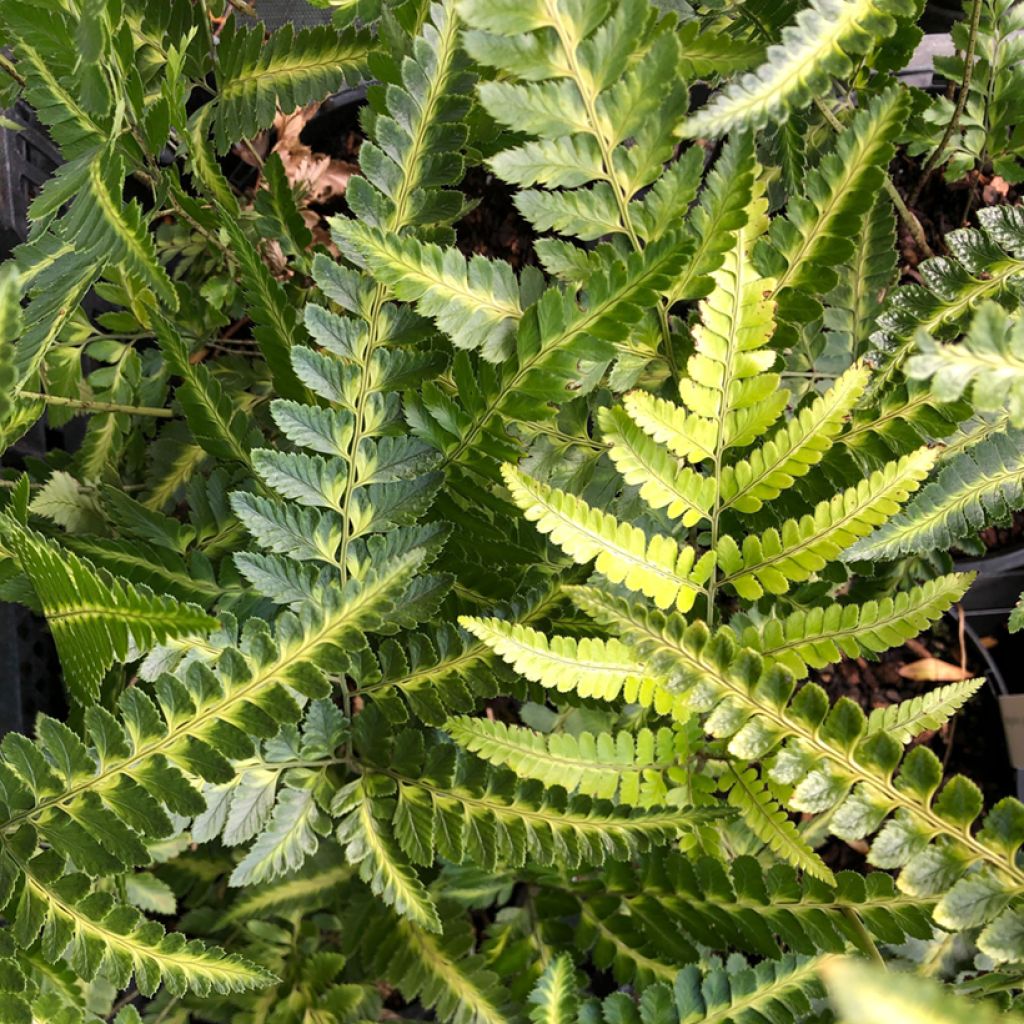

Rumohra adiantiformis Variegata - Fougère des fleuristes panachée
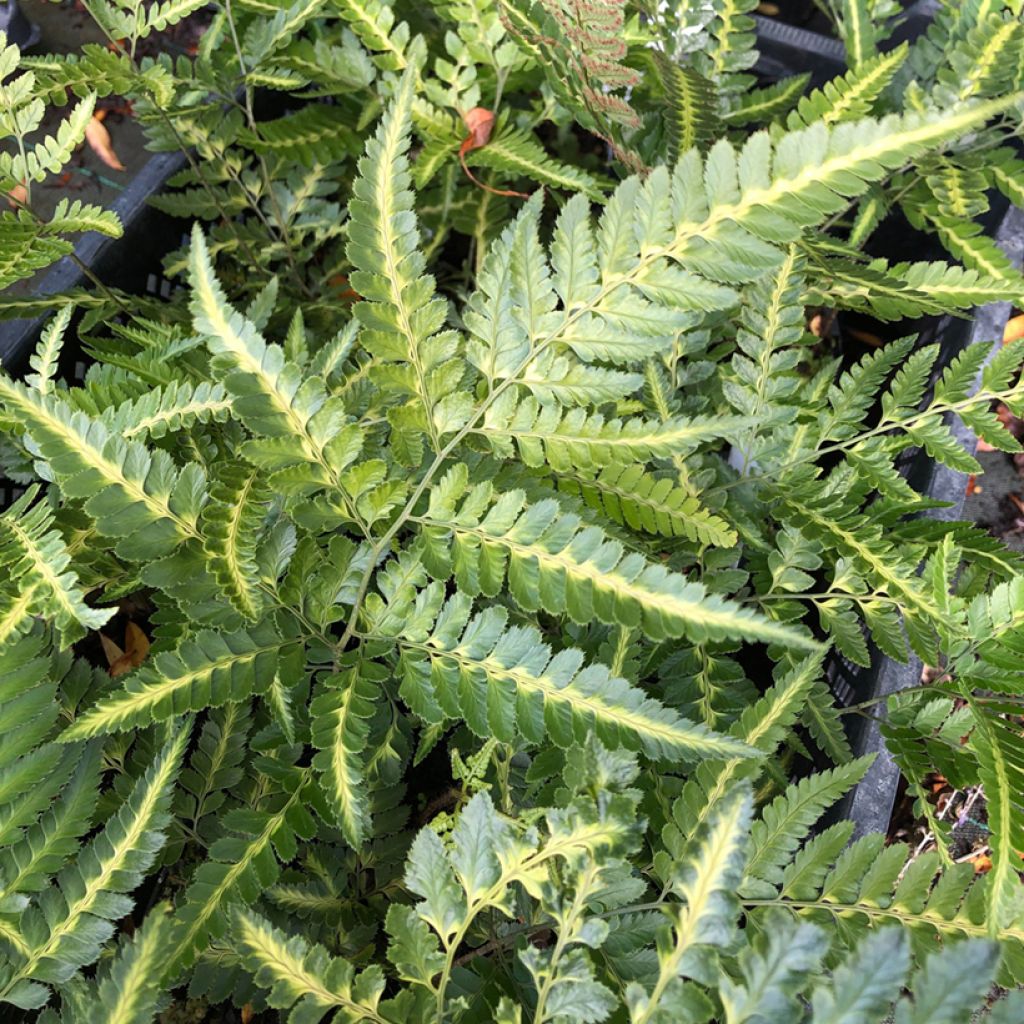

Rumohra adiantiformis Variegata - Fougère des fleuristes panachée


Rumohra adiantiformis Variegata - Fougère des fleuristes panachée
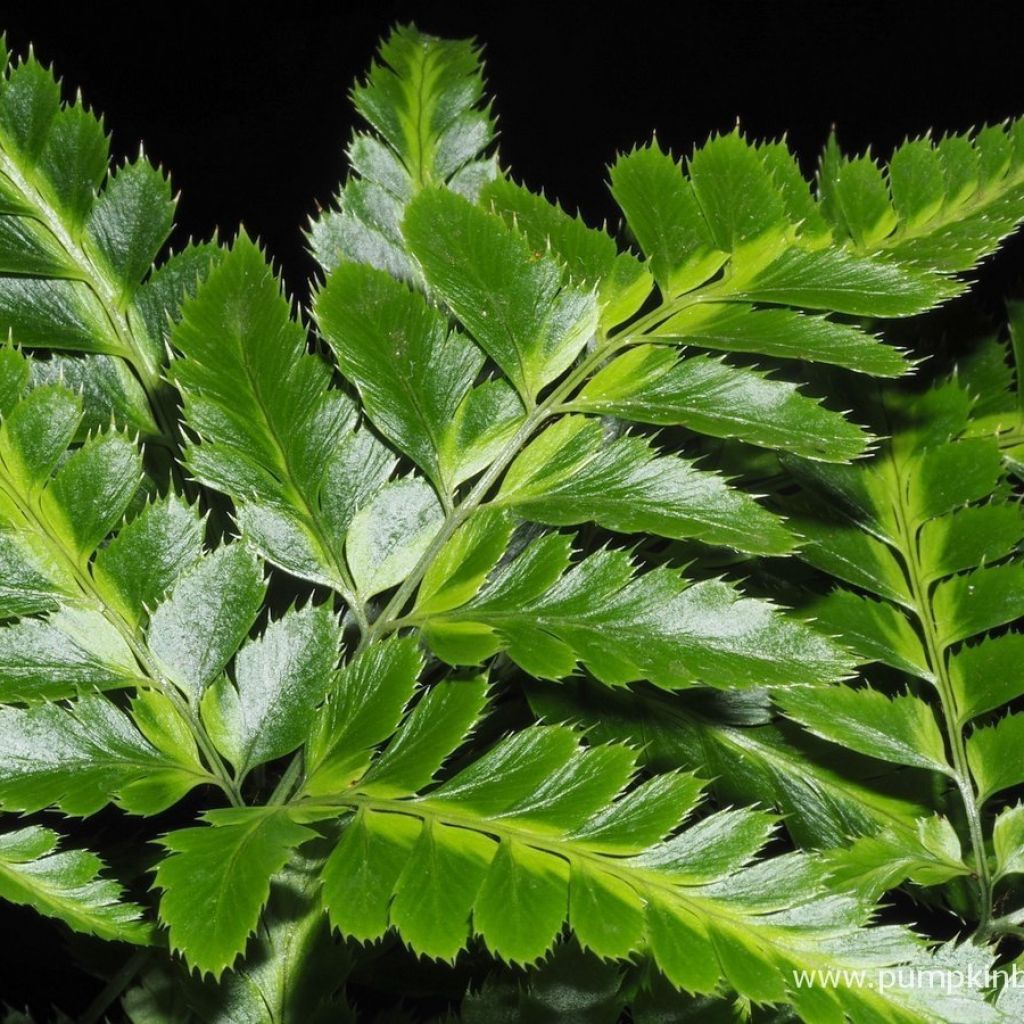

Rumohra adiantiformis Variegata - Fougère des fleuristes panachée
Rumohra adiantiformis Variegata
Rumohra adiantiformis Variegata
Leatherleaf fern, Iron fern, Seven weeks fern
Not suffered from the journey, and already enjoying itself.
MYRIAM Baboula , 21/09/2022
This plant carries a 12 months recovery warranty
More information
We guarantee the quality of our plants for a full growing cycle, and will replace at our expense any plant that fails to recover under normal climatic and planting conditions.
From €5.90 for pickup delivery and €6.90 for home delivery
Express home delivery from €8.90.
Does this plant fit my garden?
Set up your Plantfit profile →
Description
Rumohra adiantiformis Variegata is a lovely variegated form of the famous Florist's Fern. It is a very tender plant that is primarily grown indoors or in a conservatory, or even on a sheltered green wall, protected from frost. Whether in a pot or floral arrangements, its timeless elegance and the brightness of its shiny vibrant green fronds with a central band of yellowish green that almost looks artificial, are appreciated. Place your Rumohra 'Variegata' in partial shade or dappled sunlight, in slightly moist but well-drained soil, and in an atmosphere that is not too dry.
Rumohra adiantiformis Variegata belongs to the Dryopteridaceae family. The evergreen botanical species is native to tropical areas of South America, the Caribbean, South Africa, the western islands of the Indian Ocean, Papua New Guinea, and Oceania. It is a perennial fern with slightly trailing rhizomes, slowly forming a spreading and dense tuft, approximately 35 cm high and 35-40 cm (16in) wide. The 'Variegata' form develops generally triangular, leathery, bipinnate fronds with toothed pinnules or leaflets along the edges. They are shiny green with a lemon-green central line.
Rumohra adiantiformis has great ornamental value but is not suited for growing outdoors in our climates. It thrives in environments resembling tropical forests: filtered light, temperatures ranging from 10 to 22 °C (50 to 71.6°F), and moderately humid air. It can be grown in a pot, terrarium, floral compositions, bottle gardens, or a planter. To accompany it, consider asparagus ferns, Asplenium nidus, New Guinea impatiens, plectranthus, and other African violets, for example. Of course, its long-lasting cut foliage enhances any homemade flower arrangement.
Report an error about the product description
Foliage
Plant habit
Botanical data
Rumohra
adiantiformis
Variegata
Dryopteridaceae
Leatherleaf fern, Iron fern, Seven weeks fern
Cultivar or hybrid
Other Adiantum
Planting and care
Rumohra adiantiformis ferns are tender, frost-sensitive plants, most often grown indoors, in a conservatory or in a bright room that is not too heated. They prefer temperatures ranging between 10 and 22 °C. Place them in a very bright location, but without direct sunlight planted in high-quality soil mixed with a little sand. The growing medium should always remain slightly moist but not waterlogged. Do not leave a saucer under the pot as excess moisture can cause the rootstocks to rot. Regularly apply fertiliser for green plants. Also, spray the foliage with rainwater whenever necessary.
To repot your fern, wait until the pot is filled with roots, preferably in spring. You can also divide the clump at the same time, ensuring that each division is equipped with a beautiful piece of rootstock and several fronds.
Planting period
Intended location
Care
-
, onOrder confirmed
Reply from on Promesse de fleurs
Shade-loving perennials
Haven't found what you were looking for?
Hardiness is the lowest winter temperature a plant can endure without suffering serious damage or even dying. However, hardiness is affected by location (a sheltered area, such as a patio), protection (winter cover) and soil type (hardiness is improved by well-drained soil).

Photo Sharing Terms & Conditions
In order to encourage gardeners to interact and share their experiences, Promesse de fleurs offers various media enabling content to be uploaded onto its Site - in particular via the ‘Photo sharing’ module.
The User agrees to refrain from:
- Posting any content that is illegal, prejudicial, insulting, racist, inciteful to hatred, revisionist, contrary to public decency, that infringes on privacy or on the privacy rights of third parties, in particular the publicity rights of persons and goods, intellectual property rights, or the right to privacy.
- Submitting content on behalf of a third party;
- Impersonate the identity of a third party and/or publish any personal information about a third party;
In general, the User undertakes to refrain from any unethical behaviour.
All Content (in particular text, comments, files, images, photos, videos, creative works, etc.), which may be subject to property or intellectual property rights, image or other private rights, shall remain the property of the User, subject to the limited rights granted by the terms of the licence granted by Promesse de fleurs as stated below. Users are at liberty to publish or not to publish such Content on the Site, notably via the ‘Photo Sharing’ facility, and accept that this Content shall be made public and freely accessible, notably on the Internet.
Users further acknowledge, undertake to have ,and guarantee that they hold all necessary rights and permissions to publish such material on the Site, in particular with regard to the legislation in force pertaining to any privacy, property, intellectual property, image, or contractual rights, or rights of any other nature. By publishing such Content on the Site, Users acknowledge accepting full liability as publishers of the Content within the meaning of the law, and grant Promesse de fleurs, free of charge, an inclusive, worldwide licence for the said Content for the entire duration of its publication, including all reproduction, representation, up/downloading, displaying, performing, transmission, and storage rights.
Users also grant permission for their name to be linked to the Content and accept that this link may not always be made available.
By engaging in posting material, Users consent to their Content becoming automatically accessible on the Internet, in particular on other sites and/or blogs and/or web pages of the Promesse de fleurs site, including in particular social pages and the Promesse de fleurs catalogue.
Users may secure the removal of entrusted content free of charge by issuing a simple request via our contact form.
The flowering period indicated on our website applies to countries and regions located in USDA zone 8 (France, the United Kingdom, Ireland, the Netherlands, etc.)
It will vary according to where you live:
- In zones 9 to 10 (Italy, Spain, Greece, etc.), flowering will occur about 2 to 4 weeks earlier.
- In zones 6 to 7 (Germany, Poland, Slovenia, and lower mountainous regions), flowering will be delayed by 2 to 3 weeks.
- In zone 5 (Central Europe, Scandinavia), blooming will be delayed by 3 to 5 weeks.
In temperate climates, pruning of spring-flowering shrubs (forsythia, spireas, etc.) should be done just after flowering.
Pruning of summer-flowering shrubs (Indian Lilac, Perovskia, etc.) can be done in winter or spring.
In cold regions as well as with frost-sensitive plants, avoid pruning too early when severe frosts may still occur.
The planting period indicated on our website applies to countries and regions located in USDA zone 8 (France, United Kingdom, Ireland, Netherlands).
It will vary according to where you live:
- In Mediterranean zones (Marseille, Madrid, Milan, etc.), autumn and winter are the best planting periods.
- In continental zones (Strasbourg, Munich, Vienna, etc.), delay planting by 2 to 3 weeks in spring and bring it forward by 2 to 4 weeks in autumn.
- In mountainous regions (the Alps, Pyrenees, Carpathians, etc.), it is best to plant in late spring (May-June) or late summer (August-September).
The harvesting period indicated on our website applies to countries and regions in USDA zone 8 (France, England, Ireland, the Netherlands).
In colder areas (Scandinavia, Poland, Austria...) fruit and vegetable harvests are likely to be delayed by 3-4 weeks.
In warmer areas (Italy, Spain, Greece, etc.), harvesting will probably take place earlier, depending on weather conditions.
The sowing periods indicated on our website apply to countries and regions within USDA Zone 8 (France, UK, Ireland, Netherlands).
In colder areas (Scandinavia, Poland, Austria...), delay any outdoor sowing by 3-4 weeks, or sow under glass.
In warmer climes (Italy, Spain, Greece, etc.), bring outdoor sowing forward by a few weeks.











































